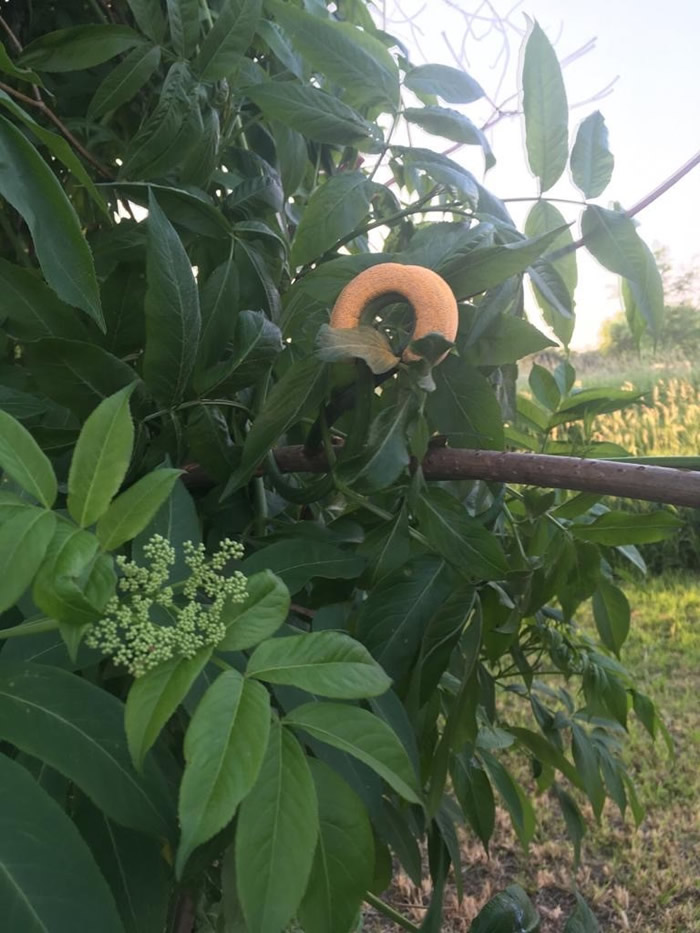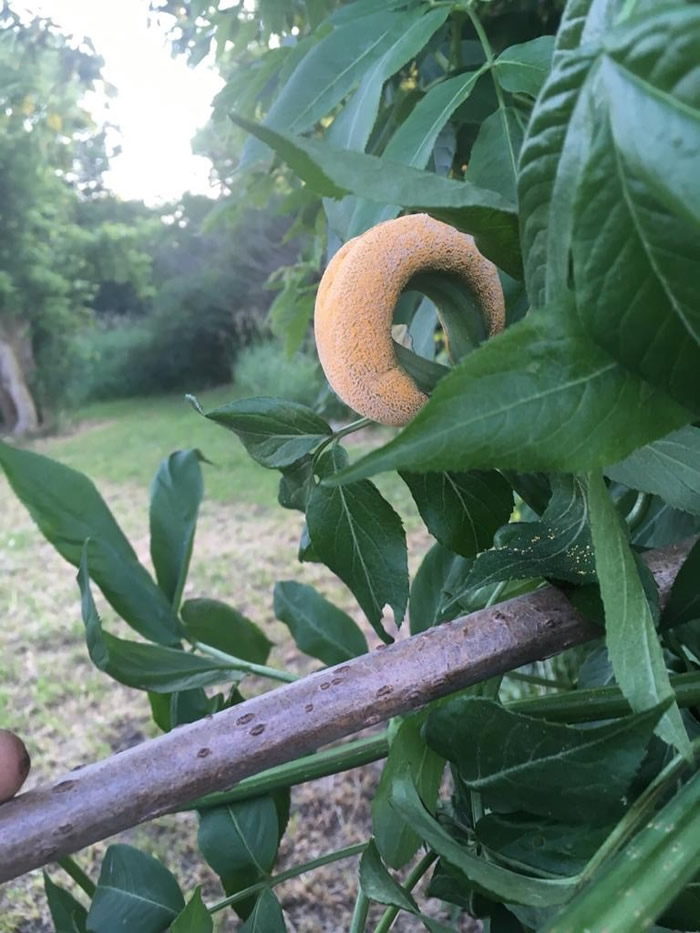Issue 6, July 1, 2020
Elderberry Rust
The common elderberry, Sambucus canadensis, is an adaptable, native shrub known for its showy white flowers and edible fruit. It has a rather unkempt growth habit, which often limits its landscape use to naturalized areas. The common elderberry also happens to be one of the more common plants that I am asked to identify. The most recent request included photos with symptoms of elderberry rust, a disease that I had not seen before.

Orange, gall-like swelling in elderberry stem caused by elderberry rust (Puccinia sambuci)

Orange, gall-like swelling in elderberry stem caused by elderberry rust (Puccinia sambuci)
Elderberry rust is caused by the pathogen, Puccinia sambuci, a heteroecious fungus that requires two hosts, elderberry (Samucus spp.) and a sedge (Carex spp.) to complete its life cycle. Infections on elderberry cause bright orange, gall-like swellings to form on stems, leaves, petioles, and flowers. While striking, and arguably interesting in appearance, elderberry rust is not likely to kill the plant. However, recent research conducted at the University of Missouri found that severe infections will cause leaf loss, and even minor infections will potentially reduce fruit yields.
Disease management practices will be unnecessary for most landscape plantings. Those interested in utilizing the edible fruit may need to manage this disease to maintain yield. Eliminating nearby sedge plants that serve as alternate hosts is one potential control measure. Fungicides will protect developing leaves from infection. The University of Missouri Extension recommends beginning fungicide applications just after leaflet emergence. Fungicides should be reapplied at intervals according to label instructions until mid-May or when temperatures exceed 75 degrees F.
Additional Resources:
Elderberry Rust, University of Missouri Extension
https://extension2.missouri.edu/ipm1036
Puccinia sambuci Infection of American Elderberry Plants
HORTSCIENCE 54(5):880–884. 2019. https://doi.org/10.21273/HORTSCI13869-19
Author:
Travis Cleveland